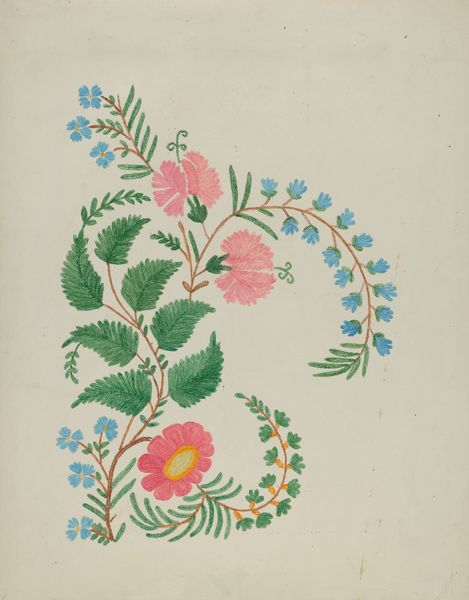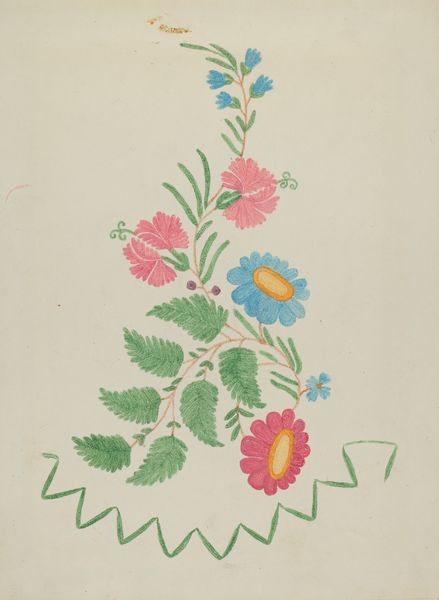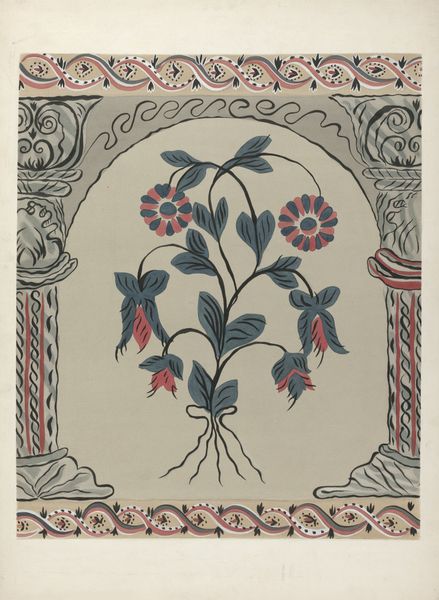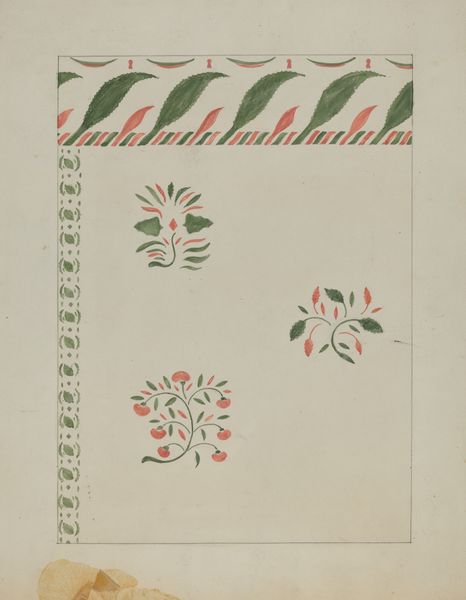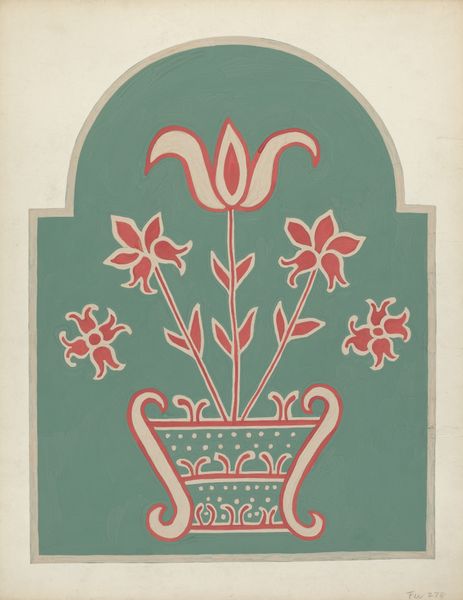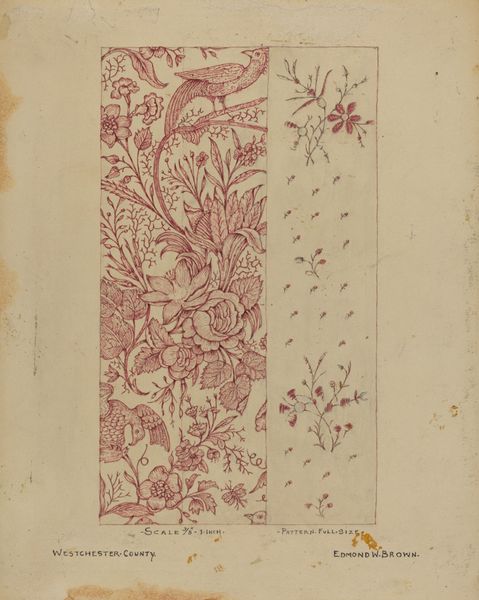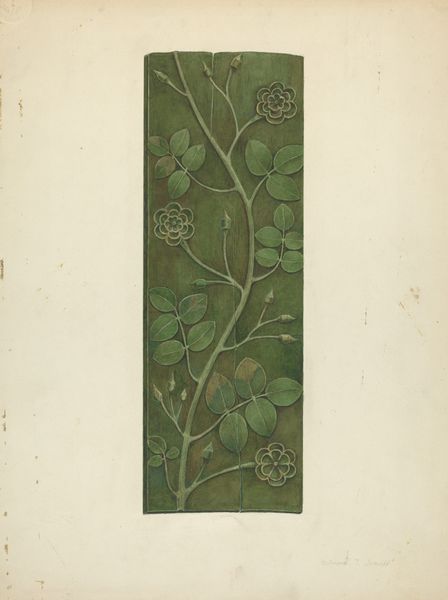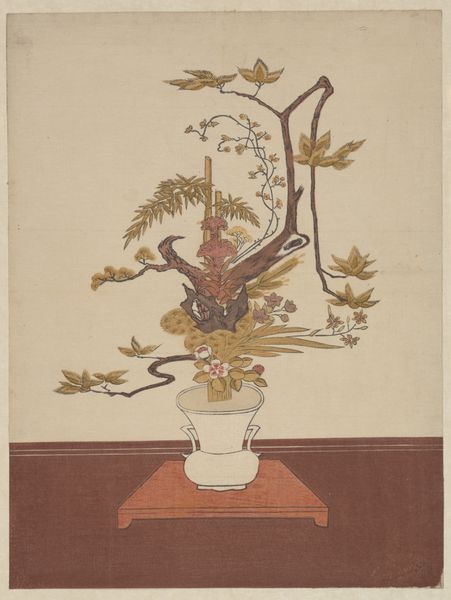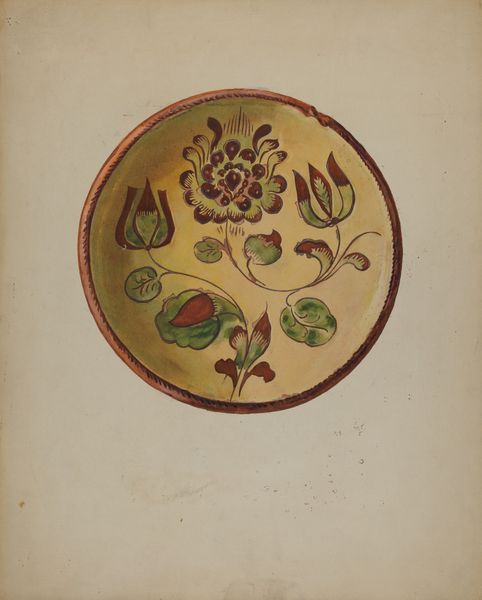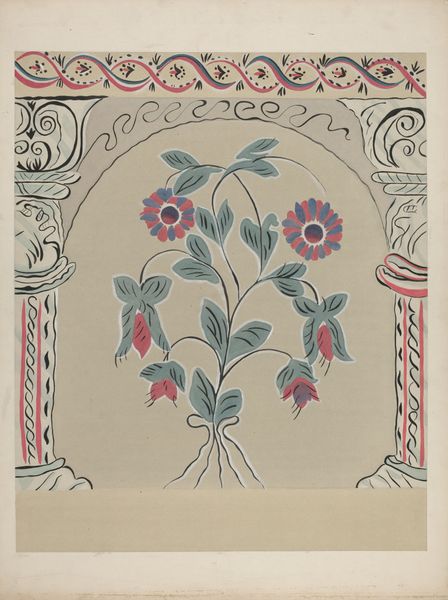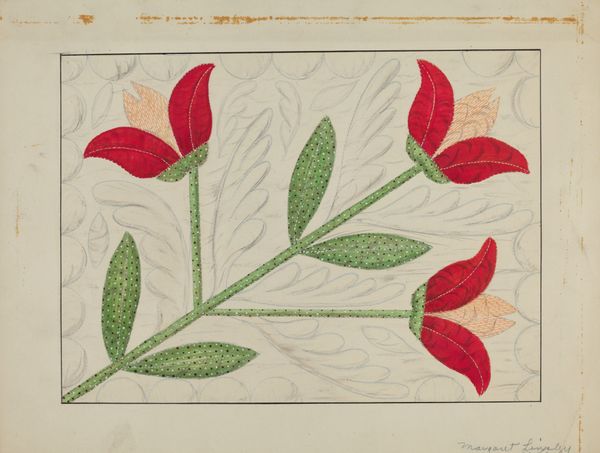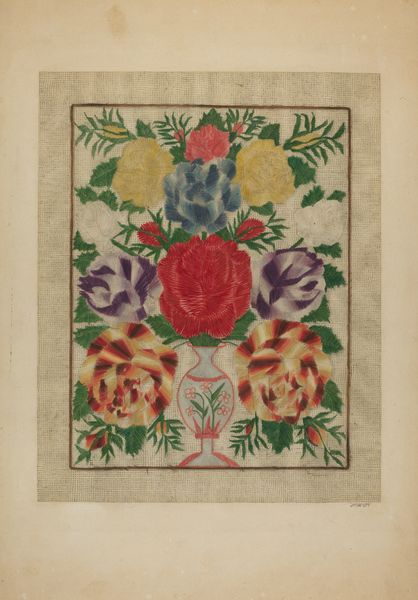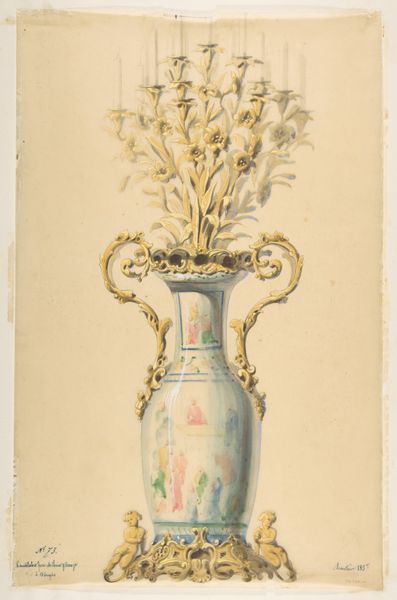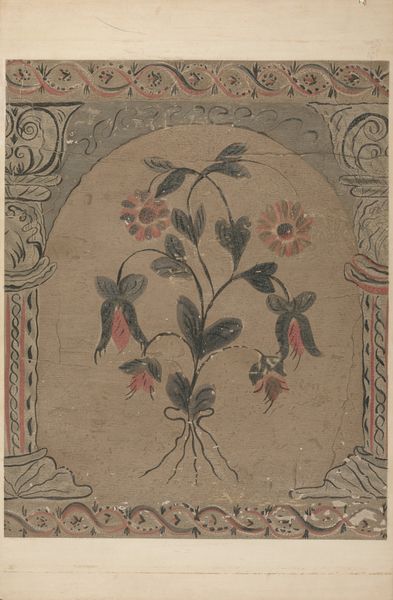
drawing, paper, watercolor
#
drawing
#
paper
#
watercolor
#
decorative-art
#
watercolor
Dimensions: overall: 35.5 x 27.9 cm (14 x 11 in.)
Copyright: National Gallery of Art: CC0 1.0
Curator: We are looking at "Stencilled Wall," a watercolor drawing on paper, created around 1936 by Ray Holden. What strikes you most about it? Editor: Its simplicity. The color palette—a muted green and coral red—combined with the repetitive floral and bird motifs gives it a handcrafted, folk-art feel. It feels both timeless and somehow very much of its time. Curator: That's a keen observation. During the 1930s, there was a resurgence of interest in early American crafts and design, fueled, in part, by the Colonial Revival movement. Decorative arts were considered particularly important because they provided people with an outlet to create art that could be incorporated into their homes. Editor: And thinking about the social context of the Great Depression, these more accessible and homemade aesthetics perhaps resonated with a population facing economic hardship. Did this design offer a more attainable version of beauty, a connection to the past amid so much uncertainty? Curator: Exactly! Also, recall the role of museums at that time. They actively promoted and legitimized this type of design through exhibitions and educational programs, thus making it more acceptable and valued. Editor: Right. Museums weren't neutral spaces then, and aren't neutral spaces now. They actively shape our understanding and valuation of art. "Stencilled Wall," for example, feels like a pre-cursor to mid-century modernism, that focus on pared-down shapes in nature is here in Ray Holden's stencil design. Are those flowers or buds in the stylized shapes of the vase? And the tiny birds sitting atop sprigs or petals? Curator: Interesting—they could be interpreted as either. From a historian's point of view, these stenciled wall designs also provided economic opportunities for artists and craftspeople to produce decorative elements for middle-class homes, especially during difficult times. There’s a populist element at play. Editor: It certainly sparks thoughts around democratization of art and the narratives that underpin cultural tastes, that make people yearn for a particular expression of beauty to match a societal movement. It makes you consider art’s function outside traditional elite spaces. Curator: Agreed. It brings us to consider the social and economic dynamics that influence what we consider art and where we encounter it, as well as the agency in designing new templates to represent ourselves.
Comments
No comments
Be the first to comment and join the conversation on the ultimate creative platform.
